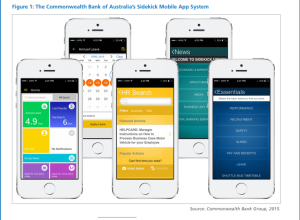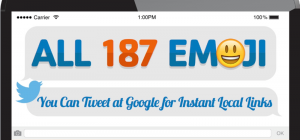Web design is a lot like decorating your home—it takes years to get things just the way you want them. Yet even after you’ve painstakingly gutted and refitted your entire kitchen, it won’t be long before you realise there are new elements that have got to be updated.

Likewise, if you want to stay relevant and attract online customers, you’ve got to keep updating your company’s website.
The idea of redesigning your site is extremely daunting. After all, even when you’re aware that something is amiss, how are you supposed to know which elements are and aren’t working? The answer sits with A/B testing.
If you’re looking to rejig critical elements of your company website, A/B tests are a stress-free way of removing all doubt from your creative indecisiveness. The fairly simple process sees developers temporarily launch two live versions of one webpage at the same time. Then, you can rely on analytics to tell you which version of the site garners the biggest response: the “A” version or the “B” version.
Now, that admittedly sounds somewhat time-consuming. But the truth is, you don’t have to completely overhaul your entire site in order to launch an effective A/B test. In fact, it’s better to limit yourself to one or two miniscule changes per test rather than a complete overhaul.
To help get you started, here are ten quick A/B testing ideas that will change the way customers interact with your website:
1) Call to action
Your company’s call to action is the most critical aspect of your entire website. After all, why does your site exist if not to encourage purchases, downloads or shares? Bearing that in mind, it’s important that you get every element of your call to action right.
One of the easiest ways to test your call to action is by altering your text. Are customers more likely to purchase an item if you’re asking them to “add to cart”, or if you tell them to “buy it now”? Play around with the words or phrasing you use to get a feel for what your customers like to see. Likewise, it’s worth testing the location of your call to action in different places on product pages.
2) New imagery
They say a picture’s worth 1,000 words—and because most customers don’t want to read a 1,000-word product description on your website, that means you’d better choose your imagery wisely. Customers may not realise it, but the entire purchasing process is incredibly aesthetic. People are going to buy into what appeals to their senses.

In order to test what sort of images appeal to your customers, try different types of images on your landing page. For example, you could test photos of people against product close-ups. Try using a product video instead of static imagery, and find out how well stock images test against images of genuine company employees.
3) Site navigation
Another design aspect you should play around with is your site navigation. Whether you’ve got a navigation bar or a list of tags to guide customers around your site, think about how easy it is for them to get from a landing page onto a purchasing page. There are plenty of minor tweaks you can make in order to help them along.

The easiest change to test is the order of items on your navigation bar. Or, you could simply swap a vertical menu for a horizontal menu. Also, try testing a static navigation menu with one that follows users as they scroll down the page.
4) Company forms
They might be a necessary evil, but most customers hate filling out cumbersome company forms. In order to prevent time-pressed customers from abandoning purchases because of these forms, you’ve got to test ways to simplify the process.
First and foremost, think about whether there are any non-essential boxes that are taking up time and space. Also, you may want to widen the form fields you’re using in order to avoid any confusion. For example, if you’re asking for a user’s profession, broad categories usually test more positively against specific ones.
5) Special prices
Most business owners don’t want to shave their prices down; however, sometimes you’ve simply got to adapt with outlying market conditions. One way to keep your bottom line from taking a big hit from price reductions is to test different price points online first.
Try testing discounts or free trials online as loss leaders in order to see whether it increases your overall sales. Or, you could test whether including a money back guarantee influences more of your web users into making a purchase.
6) Strong copy
Similar to your call to action, customers will respond differently to how you’ve worded copy on your website. In some cases, you might simply have to test using a more aggressive tone of voice, or ensure you haven’t written in a passive tense. More often, though, creating attractive copy boils down to a matter of length.
Most of your customers won’t have the time nor inclination to read a novel on your site. They’ve come to learn the bare essentials, and so it’s worth testing what your customers perceive to be essential. Test different copy lengths in product descriptions and try omitting facts and figures that may not be critically relevant from a user’s point of view. You could also try testing how customers respond to copy that’s broken up into smaller paragraphs or by bullet points.
7) Bigger funnels

If you’re trying to push customers into a checkout funnel, there are plenty of web elements you can rejig and test. First and foremost, take a look at various pages in order to locate unnecessary distractions that might be hindering purchase flow. Likewise, you should test the number of pages or clicks included within your checkout funnel. Users might be more likely to complete a transaction if you remove one or more steps in the equation.
Again, you should always bear in mind that an increasing number of online shoppers are impatient and easily distracted. By making the process of purchasing simpler, you’re more likely to land sales.
8) Social media

photo credit: The Art of Pinterest via photopin (license)
When it comes to content marketing, social media is king. There’s no easier way to expand the reach of your brand; therefore, you’ve got to maximise your chances of platform engagement. Luckily, there are plenty of tools such as Bitly out there that can help you test different social media strategies simultaneously.
By using a split testing tool on sites like Twitter, you’re able to find out what sort of content your followers are most likely to engage with. Play around with different voices and levels of quirk in order to settle on the most effective social media strategy.
9) Effective emails
It can’t be denied that email marketing has experienced a huge resurgence in recent years – and so you can’t really afford to ignore it. But most customers are extremely unforgiving when it comes to spam clogging up their inbox. A/B testing will help you to strike the right balance between marketability and intrigue.
Small changes like the length or language of your subject lines are an easy but effective test you may want to conduct. Or, try personalizing emails to see whether recipients are more or less likely to click through to your site.
10) Personalize your site
Thanks to various plugins, it’s easier than ever to customize the experiences users encounter on your website. In fact, one of the most effective ways to increase conversions is to tailor your landing page to the URLs that are generating your site the most traffic.

photo credit: 4:40pm @ Borneo Ink via photopin (license)
One way to do this is to test auto-filling out form fields based upon a visitor’s location. If you’re trading internationally, you should also try matching language-specific content to each user’s country of origin. At the end of the day, you’ll be surprised how far a little personalization can go to encourage brand loyalty.
What we’re trying to say is…
This list is by no means exhaustive. The truth is, no two businesses are alike; therefore, you may want to test elements of your website that most industries would never dream of changing. All that matters is that you’ve got clear objectives in mind before launching an A/B test, and you’ve got metrics in place that will be able to gauge the effectiveness of those tests.
Just remember: there’s no such thing as a perfect website. If you want to stand out from the competition, you can never stop changing. A/B testing will help you evolve quicker and more successfully than all of your competitors combined.
(257)








